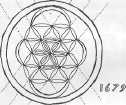| JOURNAL 1999 |
| North Craven Heritage Trust |
We looked at the Mine Manager's house, blacksmith's shop, count house and powder store discussing Captain Barrett, from Cornwall who built the Pony Level, an adit with a well constructed Portal dated 1828. This led to the 20 fathom level where bouse (rock and ore) was brought out in bogies or trucks pulled by ponies. The haulage shafts were connected to the dressing floor by a 3 foot 6 inches guage tramway with stone sleepers.
High on the Conistone boundary there is a Priest's tarn, the start of the six and a half mile Dikes Water Course which fed seven dams and worked eleven water wheels. At the site of the low grinding mill with its waterwheel pit fed by Yarnbury dam we looked at specimens of minerals from the moor : galena, coxcomb byrites, auricalcite, purple fluorspar, calcite crystals, the rare red minimum, and the exquisite pale turquoise hemimorphite.
Beevar dam was visited and the nearby meer stone (a marker on the miner's claim to a vein) and we looked at a bell dating from the 14 th century. Union shaft was our next stop, six fathoms deep, now capped for safety, The bouse from it was stored in the adjacent four storage bowls or bouse teems. Halfway down the shaft it is possible to walk into a short tunnel and look up and down the shaft to see the remains of the pump driven by rods from a nearby waterwheel.
The powder store restored in 1975 by the Earby mining group was inspected. Candles were sold here, and blasting powder at 7d a pound. We marvelled at the power of the water that on a June evening in 1977, in a terrific thunderstorm, caused a flash flood which swept down from Great Whernside destroying the bridge across Hebden Gill on the Dukes New Road.
The Cupola smelt mill was restored in 1783, and worked until the mines closed in 1882. We looked at the lead store, wheel pit and nearby flues, noting the large settling tanks where water from cleaning the flues was collected and produced enough residue to be re-smelted.
We took a quick look at the sandstone quarry where stone was taken to build most of the mining structures. Flagstones were quarried higher up for the floors of the flue and roofs of buildings. The horse whim at Taylor shaft, 360 feet deep was seen.
Following the 600 yards flue with its flagged floor and arched interior, we inspected the condenser and 48 foot chimney, miraculously preserved from the target practice of the Royal Artillery in the second world war. It stands a proud monument to those long gone miners. Storm clouds were threatening as we walked down the old moor road looking across to Thorpe Fell and Threshfield Moor where coal was mined for the Cupola smelt mill. We could almost hear the ring of miners' clogs on the stony track as we hurried back to the cars after a very wet day.
Jean Reinsch has been leading walks for over twenty years for the Dales National Parks and other groups. She lives in Grassington.
Jean Reinsch

J1999p10_19_files/tmpD0B-11.jpg
The Folly: Underside of lintel Diana Kaneps